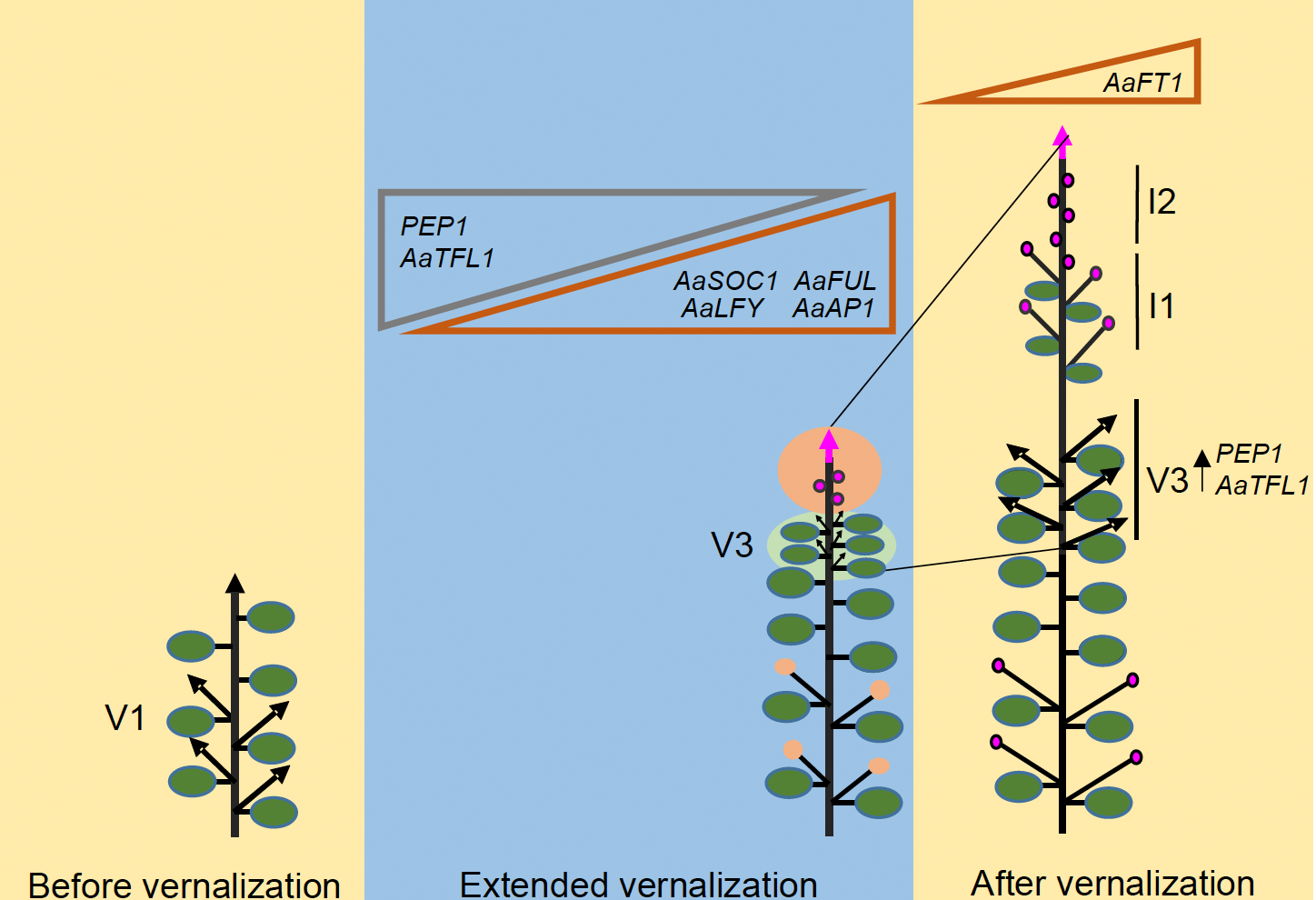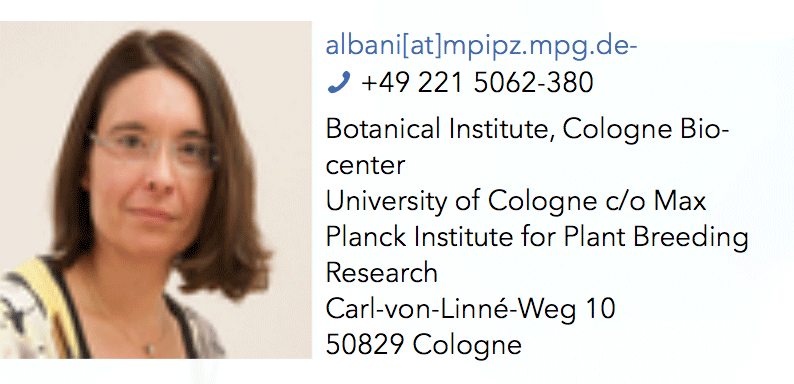博文
Plant Physiology:春化作用调控高山南芥花序命运的分子机制
||
Extended vernalization regulates inflorescence fate in Arabis alpina by stably silencing PERPETUAL FLOWERING 1
The alpine (高山植物) perennial Arabis alpina (高山南芥) initiates flower buds during prolonged exposure to cold. In the accession Pajares we demonstrate that the length of vernalization (春化) influences flowering time and inflorescence fate, but does not affect the axillary branches (腋分枝) that maintain vegetative growth. The expression of floral organ identity genes gradually increases in the main shoot apex (茎尖) during vernalization, correlating with an increase in floral commitment. In northern Arabidopsis thaliana accessions, the length of vernalization modulates the stable silencing of the floral repressor FLOWERING LOCUS C (FLC). We demonstrate that expression of PERPETUAL FLOWERING 1 (PEP1), the orthologue of FLC in A. alpina, is similarly influenced by the duration of the exposure to cold. Extended vernalization results in stable silencing of PEP1 in the inflorescence. In contrast, insufficient vernalization leads to PEP1 reactivation (再激活) after cold treatment, which correlates with delayed flowering and the appearance of floral reversion (成花逆转) phenotypes such as bracts (苞叶) and vegetative inflorescence branches. Floral reversion is reduced in the pep1-1 mutant, suggesting that PEP1 regulates the fate of the inflorescence after vernalization. The effect of vernalization duration on stable silencing of PEP1 is specific to meristems that initiate flowering during cold treatment. Extended vernalization fails to silence PEP1 in young seedlings and axillary branches that arise from buds initiated during cold treatment, which remain vegetative. We conclude that the duration of vernalization in A. alpina differentially regulates PEP1 in the inflorescence and axillary branches. PEP1 has a dual role regulating meristem fate; it prevents meristems from flowering and antagonizes (拮抗) inflorescence development after vernalization.
高山多年生植物高山南芥在长时间暴露在寒冷的情况下花芽起始。本文揭示了春化时间的长短影响开花时间和花序命运,但并不影响维持营养生长的腋分枝。在春化过程中,茎尖中花器官特征基因的表达逐步提升,并与花特征的增加相关。在南方的拟南芥株系中,春化时间的长短会调节花抑制子FLC基因的稳定沉默。作者表明高山南芥中FLC的直系同源基因PEP1基因的表达受到冷处理的影响。春化时间延长会导致花序中PEP1基因的稳定沉默。相反,春化时间不足会导致冷处理后PEP1基因的再激活,与开花延迟和苞叶、营养花序分枝等成花逆转表型性状的出现相关。在pep1-1突变体中,成花逆转的表型有所减轻,显示PEP1基因调控春化后的花序命运。春化对于PEP1基因的稳定沉默作用特异于冷处理下开花起始的分生组织。延长春化时间并不能够沉默幼苗中的PEP1基因,冷处理下起源于芽起始的腋分枝仍然处于营养生长状态。本文的结果表明对于高山南芥的冷处理会对花序和腋分枝中的PEP1基因产生不同的调控。PEP1基因对于分生组织命运的调控具有双重的作用,其阻止了分生组织进入开花并在春化处理后拮抗花序发育。
通讯:Maria C Albani (https://www.ceplas.eu/en/research/annual-and-perennial-life-histories-ra-a/jun-prof-dr-maria-albani/)
doi: https://doi.org/10.1104/pp.17.01754
https://blog.sciencenet.cn/blog-3158122-1100824.html
上一篇:Nature Plants:系统素增强植物对于昆虫取食的抗性
下一篇:J EXP BOT:甜橙的bHLH18转录因子作用于植物的抗寒性和ROS内稳态
全部作者的其他最新博文
- • Plant Physiology:CsMADS3促进柑果中的叶绿素降解和类胡萝卜素合成(华中农业大学)
- • Molecular Plant:LBD11-ROS反馈调节作用于拟南芥的维管形成层增殖和次生生长(浦项科技大学)
- • Science Advances:根结线虫通过调控植物的CLE3-CLV1模块,促进侵染进程(日本熊本大学)
- • Nature Communications:油菜素内酯参与植物营养生长期转变的分子机制解析(浙江农林大学)
- • Current Biology:光合作用产生的蔗糖驱动侧根“生物钟”(德国弗莱堡大学)
- • PNAS:花同源异型基因在叶中被抑制、花中被激活的分子机制(南卡罗来纳大学)

